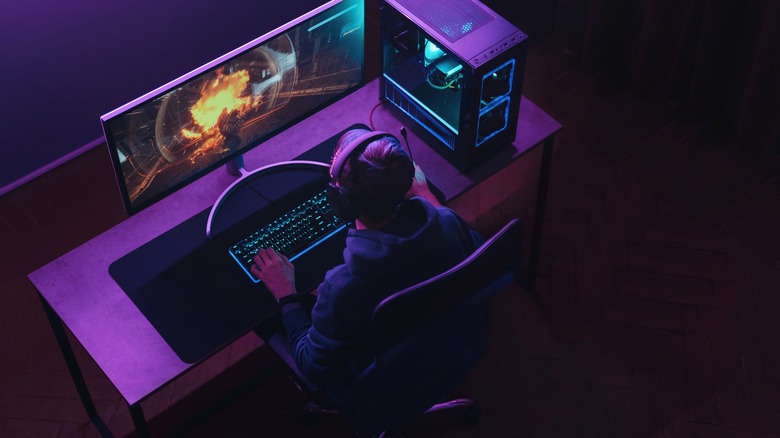What Is A Lag Switch, And How Does It Work?
If you've played online games at some point, there's a decent chance you've heard somebody talk about a lag switch once or twice. The idea behind them is the person using one will purposely interrupt their connection to the server, but instead of dropping from the game, they'll just gain an unfair advantage for a few seconds. While the interruption is happening, two different scenarios are co-occurring. On the switch owner's side, they can still move and act normally, but other players are frozen. On the other players' screens, the switch owner is frozen in place, but they can still move. When the lag switch is turned back off, the game attempts to resolve the two different scenarios, often with unintended results that give the player with the lag switch a big leg-up, like gaining more time to act or moving faster than normally possible.
It typically only works in games with peer-to-peer connections where a player is chosen as the host of the match versus dedicated servers hosted by the developer, but that doesn't mean it's impossible. While many multiplayer games run on dedicated servers, it's still annoying to see somebody using a lag switch, especially with how easy it is to use. If somebody is determined enough to make their own, it doesn't cost a lot of cash to make it happen. Tutorials have existed on YouTube for years, and you can create one using common household items. Removing your Ethernet cable from your router and quickly putting it back in could be all you need as long as the game doesn't disconnect you in the time it takes to get your internet back. Remember, you don't want to do this unless you're fine with risking a ban on your favorite game.
Are lag switches bannable offenses?
If a person were ever caught with undeniable proof they were lag-switching or exploiting, there would likely be action taken against them. In some cases, cheaters receive hardware bans from games that make it so they can't even make another account to play on. However, there's no good way to prove somebody is using a lag switch maliciously or if they just have bad internet. People can have disruptions in their connections that'll cause them to bounce around on your screen, but it doesn't mean they're cheating — it might just mean they have latency problems. If you suspect somebody is using a lag switch, you can always report them and see if the developers look into it and take action. Keep in mind people do cry wolf about people lag switching, so don't always assume any time something fishy happens, the person was cheating.
Luckily, popular games like "Fortnite" and "Call of Duty" have dedicated servers, which means lag switches won't apply. Not every game has the same reassurances, but the bright side is most game lobbies you're in won't have somebody actively trying to ruin the experience. There are certainly bad apples out there, but for the most part, you should be able to play your favorite games without fear of somebody cheating.

